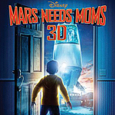Walt Disney Pictures (March 9 2012), Walt Disney Studios Home Entertainment (June 5 2012), Blu-ray and Blu-ray 3D plus DVD and Digital Copy Combo Pack, 132 mins plus supplements, 1080p high-definition 2.40:1 widescreen, DTS-HD 7.1 Master Audio, Rated PG-13, Retail: $49.99
Storyboard:
As the cover sticker very blandly says, “a warrior on Earth becomes a hero on Mars”, but there’s really so much more to John Carter than that, as the granddaddy of all superheroes kick-starts the ultimate Barsoom brawl…
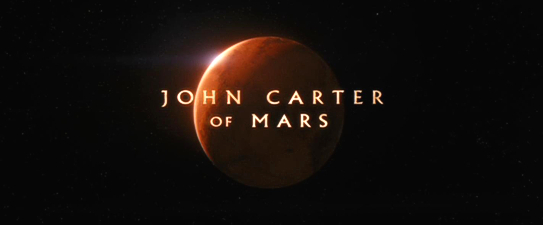
The Sweatbox Review:
So just what went wrong – or, rather, just what exactly didn’t go right – with John Carter’s theatrical release earlier this year? Certainly director Andrew Stanton and his resulting, entertaining film shouldn’t be the ones to shoulder the blame: the movie didn’t garner any better or worse reviews than any of these kinds of blockbuster pot-boilers usually do. Similarly, celebrated original author Edgar Rice Burroughs (also, of course, of Tarzan fame) couldn’t be accused of ripping off the past 35 years’ worth of science-fiction movies since he’d come up with the story and many of those speculative concepts over one hundred years ago, as any cine-literate fan would be able to tell you. That would, admittedly, be a stumbling block for anyone attempting to bring Burroughs’ tale of a man’s adventures on Mars, since in the intervening years since the original publication of A Princess Of Mars, so many of the ideas and names that the book and a subsequent series of follow-ups initiated wound up being borrowed and outright stolen by Burroughs’ successors in the movie business (Jeddaks, anyone?).
When remarking about his other literary successful hero, John Clayton, otherwise known as Tarzan, Burroughs exclaimed that the only way to convert his vine-swinger stories using the then-new motion picture process would be to adapt them with the kind of artistry only possible through the animation of the Walt Disney Studios. This was, remember, after Burroughs’ had attempted a live-action silent film himself, and after some of the now-creaky (but no less entertaining) MGM features starring Johnny Weissmuller, which deviated from Burroughs’ origins for a more distracting and less serious approach. While Tarzan did swing in several films released before he died, Burroughs would, albeit posthumously, get his wish when Tarzan became a hit animated feature from the Disney Studios in 1999, but a satisfactory transference of his Mars-set tales eluded him during his lifetime.
To this end, Burroughs granted the film rights to a certain Bob Clampett (yes, the same Looney Tunes stable Bob Clampett as boosted the careers of Bugs Bunny and Daffy Duck among many others), and how different the feature animation landscape might have been had he managed to produce his proposed animated feature production in the early 1930s, before Disney’s Snow White And The Seven Dwarfs. Instead of setting the stage for the next seventy years of animation to be largely filled with fairytale musicals and fluffy talking animals, a serious science-fiction feature (which had been attempted in such films as Metropolis and Things To Come) in elaborate and realistic animation and – something to be yet seen in the genre – full Technicolor would have seriously changed the history books had it been a success. Unfortunately for Clampett he was too ahead of the curve and probably faced the perception that an audience would never sit and pay attention to a full-length cartoon, serious in tone or otherwise – something that also plagued Disney’s widely ridiculed first feature, which drew scorn from Hollywood, who labelled it “Disney’s Folly” during production – and Clampett couldn’t get his proposed adaptation off the ground let alone his hero to Mars!
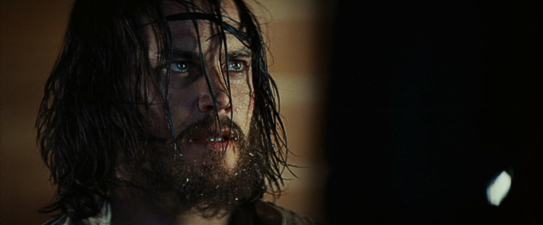
Although the Carter character would continue to appear in print, almost immediately after Burroughs’ books in John Carter Of Mars comic strips by the author’s son in the 1940s, and then from the 50s to the 70s, including a Marvel Comics series, John Carter: Warlord Of Mars, any attempts to bring his saga to the screen were presumably confounded by limitations in the special effects that would have been needed, just as Burroughs himself proclaimed. Ray Harryhausen expressed an interest in the 1950s, but the closest anyone got to producing an authentic version was in the 1980s, ironically when Carter fan Jeffrey Katzenberg optioned the rights for Walt Disney Pictures. With Tom Cruise and director John (Die Hard) McTiernan aboard for a script written by later Aladdin and Pirates Of The Caribbean scribes Terry Rossio and Ted Elliott, the hold-back this time was the budget envisioned to bring Burroughs’ Mars – or Barsoom to use the natives’ own name – to the screen.
Eventually, the rights reverted to the Burroughs Estate, upon which there suddenly sprang a lot of interest in the property. As recently as 2005, Robert (Sin City) Rodriguez was going to shoot an all-green-screen version with designs by original illustrator Frank (Fire And Ice) Frazetta before a disagreement with the Directors Guild of America precluded him from taking the helm. Sky Captain And The World Of Tomorrow’s Kerry Conran was his replacement at first (presumably due to his considerable experience with blue and green-screen shooting) but he was dropped soon after exploring the Australian outback as a location for Barsoom. Jon Favreau quickly came to Carter’s rescue, but his envisioning the film as a more faithful adaptation of Burroughs’ books added costs to an already high-budget and risky picture (he moved on, not unsuccessfully, to Iron Man and all things Avengers). Watching all of these back-and-forth shenanigans from the sidelines was none other than Pixar’s Stanton, a Carter fan since childhood who simply wanted to see his hero depicted correctly on the screen.
With the rights reverting again to the Burroughs Estate, Stanton found himself given a bit of clout with the double-whammy releases of Finding Nemo and WALL-E, picking up Academy Awards for Best Animated Feature on both counts, and asked Disney to renew their option once again, initially acquiring the film rights for Pixar. It seemed as if Carter had finally found a suitable home, but the movie saga was far from over. First, Stanton had to convince Disney’s top brass that he could manage a large-scale live-action shoot, a problem that his Pixar stable-mate Brad Bird skirted around by loaning himself out as a director-for-hire on Paramount’s fourth Mission: Impossible picture. Since Nemo and WALL-E were both considered offbeat stories that Stanton had shaped into crowd-pleasers, he passed this preliminary stage, scoring directing and co-writing duties.

Initially, fans were very excited, but the cracks were quick to appear. Unhappy with the performance of their then-recent girl-centric offerings The Princess Diaries 2 and the high-profile The Princess And The Frog, as well as wanting to make sure it was clear Stanton’s film was a Boy’s Own style actioner, Disney decreed that A Princess Of Mars would drop the Princess from its title. Fair enough, one might think: Burroughs himself published the stories under different titles, from the original serialization Under The Moons Of Mars to the 1917 Princess novelization and the later John Carter Of Mars comics. Almost immediately after being announced as a Pixar production, John Carter Of Mars, a naturally more than suitable replacement moniker and arguably more appropriate, then seemed to go quiet and slip quietly from the schedule.
It’s originally projected release date was first pushed back from fall 2011 to summer 2012, before being swapped for Pixar’s Brave and dumped in the earlier, pre-summer wasteland of March. In the meantime, some of the luster of the movie was diluted by one of those cheapo knock-off direct-to-video movies that have become the staple of the Sci-Fi Channel, released in 2009 as A Princess Of Mars. Primarily attempting to cash in on the theatrical issue of Avatar, which was just the latest blockbuster to “share” themes and elements with Burroughs’ original, the movie (which “featured” the infamous Traci Lords) got one thing right in its depiction of Carter with close-cropped black hair among lots of close-ups of plastic-looking Animatronic masks, and even makes for some interesting comparisons with Stanton’s eventual film in the early Mars-set scenes, but a fitting, big budget satisfactory version of Burroughs it is not!
When John Carter Of Mars finally arrived at its March release slot, with a teaser trailer showing initial scenes from the movie, it was quietly noticed that while the Disney branding remained intact, the Pixar name was missing. This was somewhat spuriously attributed to the fact that the CG studio specifically made movies “for all ages”, while Stanton and co-writer Michael Chabon’s script had been mooted as approaching a PG-13 rating. Whether you believed this take on matters or not, the removal of the Pixar endorsement, not to mention the lackluster teaser trailer that didn’t exactly get fans immediately hooked, clearly took John Carter Of Mars’ audience interest level down a few pegs, even if a natty JCM logo stirred up some excitement. Next up? Another title change, apparently based on the fact that Disney had carried out a survey suggesting audiences didn’t go to films with “Mars” in the title after their 2011 movie Mars Needs Moms tanked in theaters.
Disney needn’t have looked far for the reasons that movie died a spectacular death at the March box-office: over-bloated and badly rendered in less than pleasing motion-capture animation, Mars Needs Moms was noisy, unfunny and unemotional; the movie would have failed even if it didn’t have Mars in the title and it had been called “See Our Movie And We’ll Give You A Million Dollars!”. But, decreed it was, and so John Carter Of Mars lost the only intriguing thing about its title and confusingly became the standard, boring sounding John Carter but kept its JCM logo. Again, some might have bought Stanton’s explanation that the title reflected Carter’s “becoming John Carter of Mars”, but the plan to have Mars in the film’s intended two sequels didn’t really wash and fan anticipation went down another few notches, at which point the Disney marketing team should have swung into high gear in educating the wider, non-genre literate audiences as to just what they were in for.

Except…they didn’t. With the longtime Studio Mouseka-marketeer Dick Cook “enjoying” an enforced retirement, new executive Rich Ross only had his Disney Channel experience to fall back on. Without the know-how on how to sell a big Studio picture, a game of out-guessing began between the Disney team and Stanton, who apparently rejected several concepts and relied on his in-house Pixar colleagues. What didn’t help was that Stanton was repeatedly shooting several scenes twice over, falling back on his animation approach when live-action works very differently, and the film quickly picked up a negative buzz in the industry for having gone over time and budget. A second trailer failed again to increase audience awareness, even among fans eager to see the film, at which point it seemed Disney lost interest, if it ever had it, and looked to dump the film in its March slot – the same time period as Mars Needs Moms – and move on.
But John Carter (Of Mars) could have been saved, and easily at that. Although it had lost its Pixar branding and intriguing title, the film was still coming from the Studio that had risked all on a Tron sequel and turned what could and maybe should have been a terrible debacle on all counts into something of a surprise hit and a new franchise for the Studio. However, none of the promotional activity hinted at a fraction of the cleverness of the Tron: Legacy campaign when if ever there was a movie tailored to the same demographic it was John Carter Of Mars. The Studio could have even used Legacy’s campaign as a template: instead of building up a fictional backstory for Kevin Flynn and ENCOM, why didn’t Disney start to drop questions such as “Who is John Carter?” and create an online breadcrumb trail that revealed more and more about Barsoom and what Barsoom really was?
Even as basically brandishing their past achievements, why did the promotional material not announce that the film came “from the Academy Award-winning director of Finding Nemo and WALL-E”? Was it because Carter was being positioned as more of a grown up movie and Stanton didn’t want to scare the little kids that came to those previous films? Okay…I can see that, even if I think it would have been perfectly fine to trade on the sci-fi of WALL-E, which wasn’t exactly a laugh-a-minute kids’ picture. So, sidestepping the kids angle, why weren’t a number of the Studio’s other like-minded properties evoked, “from the Studio that brought you Tron: Legacy and Pirates Of The Caribbean”, to call on the required sci-fi and period aspects? Even Burroughs’ name wasn’t pressed into service when “from the creator of Tarzan” might have ensured some additional interest and clarification just to which John Carter the film dealt with.
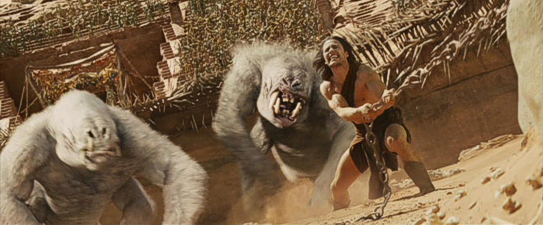
As the movie drew close to its ultimately doomed release, there was little publicity to speak of. A series of unimaginative and nondescript posters and publicity shots, plus a complete lack of John Carter toys and merchandise meant many didn’t realize the film was about to hit movie screens. In attempting to make the movie the star, Stanton had not cast a major name in any of the recognizable character roles, relying on the relatively unknown Taylor Kitsch as the title character, but neither men seemed to be around for pre-release press junkets or television interviews. The movie supposedly had a $100 million marketing spend, but where that money went is anyone’s guess: some rumors persist that the film’s 3D conversion was nothing more than a marketing ploy. Had Disney really wanted to pull the stops out, it would have gone the Tron: Legacy route or, even at the eleventh hour, presented some kind of “first look in 3D” exclusive trailer or full scene from the then-insanely anticipated Avengers movie that would have practically guaranteed geeks on seats (way too late, it was paired with that film on some double bills and finally got some good word of mouth from the kind of people that should have caught it earlier).
Ultimately, through intended means or simple incompetence, John Carter made for a slow and unfortunately very public death at the American box-office, and even though international audiences bolstered its US takings of just $70m by another $200m or so, the extended shoot and squandered marketing budget meant Disney took a loss of well over $100m on the project. This has, in the wake of John Carter’s under-performance, led Disney to take stock of its big budget productions, halting the progress of its 20,000 Leagues Under The Sea remake (good, the Douglas/Mason film is a bona fide movie classic, let alone a Disney film) and reigning in the budge on The Lone Ranger, a film that, despite pairing director Gore Verbinski and star Johnny Depp together again, I just don’t feel Disney should be making. Name one other non-originated or owned property that the Studio has attempted in the past (George Of The Jungle? Mr Magoo? Inspector Gadget!?) that has been artistically worthwhile, and the film has already fallen prey to overruns…
With such a checkered past and troubled theatrical release, it’s somewhat impossible to refer to John Carter without bringing that history to the table. Given everything a film version went through since Burroughs published his book to its eventual arrival onscreen, the film would have to be absolutely terrible or an undiscovered work of genius. Well, the terrible bit was thankfully covered by the Sci-Fi Channel movie, but the frustrating thing is that Stanton’s film isn’t quite the big-hitter needed to kick the naysayers into touch. It almost is, and certainly doesn’t deserve the toxic reputation it has quickly acquired. The main issues are, as was inevitable in any screen version, that so much of the mythology has been chipped away at and used in any number of other sci-fi blockbusters, from everything like Superman and Flash Gordon to Star Wars (itself two times removed for being based on Flash) and Avatar.
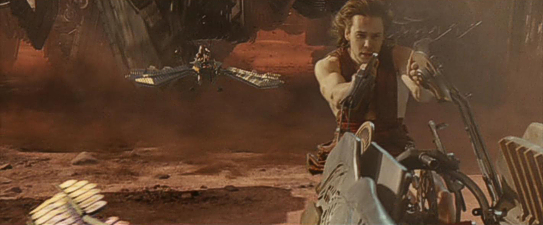
So the audience has to realize that although they’ve seen many of the elements before, it was here that they actually originated…a big ask in this day and age of such unoriginal, inspired-by productions. Layered on top of this is that Stanton directs the film like a B-Picture, sometimes throwing in a questionably awful line or vocal performance that doesn’t help the often uneven tone and pacing. However, on the other hand, John Carter (Of Mars) gets so much right and, if you can get past the snagging feeling that you’ve seen some of its elements so often before, there’s much to enjoy…and not on a kitschy so bad it’s good level either. There is much in John Carter that escapes its B-Movie roots and should be seriously considered, not least the film’s often amazing visuals, a mix of digitally augmented sets, motion-capture Martians and CG effects.
And at least Stanton seems to have a directional plan, unlike his stable-mate Bird, whose much more successful Mission: Impossible could have ultimately been directed by anybody. Given his very noticeable imprint on The Iron Giant, The Incredibles and Ratatouille, I had been expecting so much more from Bird’s live-action Mission debut, and come away not really remembering anything specific about the direction (it was serviceable, for sure, but one got the feeling that Bird took the gig merely as a way to prove he was a suitable bet for his long-cherished San Francisco earthquake drama 1906). Films of both Mission and Carter’s scale are often so large that directors can fail to make their mark on them unless they are a Spielberg, Zemeckis, Scorsese or even a Burton, but here Stanton does manage to not let John Carter come over as a simple Star Wars prequel clone, even if there are some similarities in some of the sleek vehicles which recall The Phantom Menace but somehow work much more convincingly here than they did in that universe.
There’s something of another Star Wars connection in producer Jim Morris, a one time an Industrial Light and Magic executive who left that company to join Pixar in order to oversee and produces its movies. He serves in the same role here, but a surprise is that a number of visual effects vendors, and not Pixar or even ILM, have been employed to largely create the intricate character animation, itself at times motion-captured. To be honest, what with the on again / off again journey the movie took in production, I had kind of switched off while it was being made and was quite content to simply turn up and watch the thing when it finally surfaced and, as such, I had assumed Pixar were still in the frame for creating the visuals since it had been so loudly trumpeted that this would be their first quasi-live-action film and, essentially, visual effects picture. So the choice of Double Negative and Cinesite, primarily, in the wake of Pixar’s no-show was still a surprise to me, although it was a pleasant one nonetheless as it turns out, since John Carter’s landscapes and creature designs are as good as anything either companies have turned out in their digital lifetimes, with a number of bigger names (including Willem Dafoe and Thomas Haden Church) providing the core performances for their characters.

Stanton is also serviced well by the rest of his largely non-famous cast, with Kitsch being the kind of leading man material that reminded me of a younger Harrison Ford, ironic in that the movie was pitched at one point as “Indiana Jones on Mars”. It isn’t quite that exciting, but there are some nice touches: the editing early on when solider Carter is repeatedly captured wonderfully assists the humor of each moment, and Samantha Morton as a sympathetically friendly Thark makes her mark in a relatively small role and shows why she’s the kind of actress who can bounce between these big studio blockbusters and smaller independent films. And there’s fun to be had from the movie, too, like Carter’s predictably cute “dog” Woola, the film’s nice line in subtle wit, and such concepts, direct from Burroughs, as an early “universal translator” that helps Carter’s understanding of the Barsoom language long before Douglas Adams slipped a Babel Fish into Arthur Dent’s ear! I was less impressed with the film’s 3D approach, it having been surprisingly post-converted instead of being shot in the format, although you can read more on my thoughts on the final result in the video section below.
Lastly, there’s the question of that title, which resolves Carter’s adventures on Barsoom by visually amending the opening “John Carter” with the originally intended “Of Mars” to its treatment. You can follow the official explanation that, at the beginning of the movie, Carter was just an average Civil War soldier and that by the end his warrior status on Mars is set in stone, if you like, and fair play to you: it does work in that context. But, personally, I think it’s Stanton’s own way of getting his preferred title onto the screen; John Carter Of Mars is much more interesting, even if the character’s name is quite edgy and sounds ruggedly ready for roughness (and was, by the way, used by yours truly for the names of two characters in one of my own sci-fi short films as an homage way back when). Certainly, the removal of the Mars didn’t ultimately hurt the film’s chances any more than its marketing, so who’s to say it wouldn’t have been a bigger hit as originally intentioned? I say bring on the “Of Mars” and keep it there!
Cleverly added to the book is a new prologue and coda that recalled, to me at least, the feeling of Simon Wells’ Victorian scenes in his remake of The Time Machine, a vastly underrated film for most of its running time that also sports a terrific musical score. Without these scenes, I think that John Carter’s dismal box-office performance might have been warranted, but their brilliance is in grounding the film at its front and end with a very cool reveal that plays very well and invites the audience in on its secret. Happily, though, there isn’t a weak set-up for a sequel, and so although one or two were intended at least this initial movie works and plays as the one-off it will likely remain until someone else has the great idea to attempt to bring Burroughs’ Carter to the screen again. It may well be some time before that happens, but in the meantime Stanton has delivered as best as could be hoped for and, although there’s plenty of room for alternate approaches and improvement, John Carter (Of Mars) is a good yarn incredibly told, and easily a solid bet for a family movie night.
Is This Thing Loaded?
While not packed with a substantial amount of bonus features, Disney has seen fit to award John Carter a decent selection of behind the scenes content, even if one gets the sneaky suspicion that most of it was assembled before the movie came out and has been included here via contractual agreements or simply because they may as well use it up somewhere. The 3D platter naturally doesn’t contain anything, but both the Blu-ray Disc and the DVD contain the usual assortment of previews, some of which auto play and all of which can be seen from the Sneak Peeks menu option. Marvel’s Avengers, ABC’s Castle: Season Four and a terrific look at Tim Burton’s Frankenweenie are the titles touted amongst some other promos, although the Disney marketeers are at it again with Frankenweenie, pushing it as “from the director of Alice In Wonderland” instead of “from the creator of The Nightmare Before Christmas and Edward Scissorhands”, which this trail makes very clear are visual and tonal stable mates to the new film.
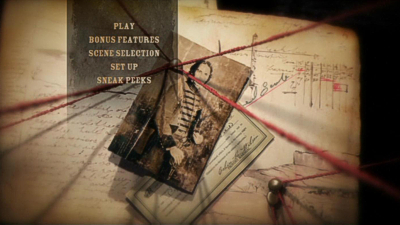
Topping the list of supplements for those interested in the actual making of the movie is director Stanton and producers Morris and Lindsey Collins’ Audio Commentary, which is sadly offered, as so many recent and current Disney discs are these days, without any picture-in-picture additional content. Whatever happened to the excellent Cine-Explore features that accompanied some of the Studio’s bigger titles? Ahh, that content seems to have been relegated to the cumbersome Second Screen concept that makes you pay over the odds for a disc that then requires you to download the behind-the-scenes content you thought you had already paid for! The filmmakers’ comments are as insightful as you would have heard from Stanton on previous such tracks, and the likelihood is that he recorded this before his film underperformed in theaters (if he didn’t then he’s covering up his disappointment very well), since there’s a lot of trilogy talk early on.

It’s actually an exceptional track, with the trio offering up everything from when they first read the novels, through casting, production anecdotes and reveals on how certain things were approached and achieved. Stanton leads the talk, giving a more than fair appraisal of the filmmaking process, and although the devastating marketing and audience reception don’t make their presence felt, you’ll really find that if you liked the movie, this is the best way to find out more about the people that made it, and how they did just that. Interestingly, Stanton speaks from a largely Pixar stance and remarks that the resulting film, being longer than a usual outing from the Studio, contains just as much animation as one of their films, and touches on the use of motion-capture as one of the processes called upon. Although it can lag due to the length of the movie (and be aware that there is at least one instance in this discussion that mirrors the movie’s PG-13 rating) this is tremendously involving, and the respect for the source and enthusiasm for their resulting movie is clearly evident.
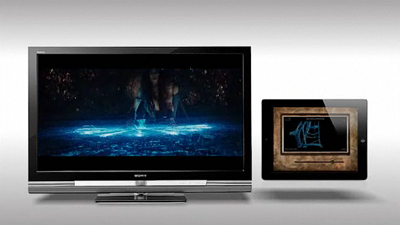
The kind of on-screen Cine-Explore material has been saved for Disney’s Second Screen “experience”, which offers a look to “explore John Carter’s Journal”. Despite the fact that there is some great stuff here (“VFX Labs” allow a layered look at various special visual effects shots and how they were built up, there are further looks at the effects, weapons and creatures, as well as over 40 video clips that cover behind the scenes, deleted scenes within context of the movie, and a nicely-done Taylor Kitsch-narrated exploration of Barsoom), I just feel that this kind of thing should be here on the disc and accessible from the menu directly. It’s cumbersome to have to rig up a separate computer (often in another room) or have to go out and buy a laptop or iPad device simply to access this content, and I will continue to have my doubts about it, such as what happens when a title becomes old enough in the catalog to have its Second Screen material removed from the web. There’s a wealth of things to look at here, but it’s not at all as convenient as being able to run it from the disc.
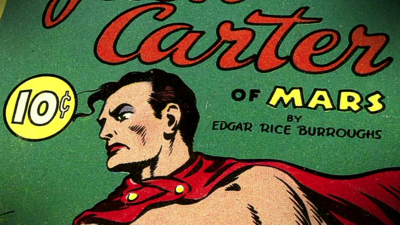
100 Years In The Making is slightly less interesting than it sounds, although it’s a good eleven or so minute account of Burroughs’ original publishing of the story and the various attempts made to bring it to the screen. Much of it is centered on the origin of the tale, its initial serialization and then novel publication, before it moves on to Clampett’s original animated feature attempt (some test footage of which can be seen much more convincingly in the Beany & Cecil Special Edition DVD from Image Entertainment). At this point, the featurette speeds up and fast forwards all too quickly to Stanton’s film, and even though fan and blink-and-you’ll-miss Thark Jon Favreau is interviewed extensively (so much that one would wonder if he wasn’t the director of the movie since Stanton is only sound-bit once or twice in comparison), any concepts or development of his proposed film version is missing, and the Sci-Fi movie isn’t even touched upon. I’d have also liked to have seen the featurette claim back some more of the ground that others have stolen from A Princess Of Mars over the years, although credit is given to Burroughs for establishing so much that the likes of Star Wars “borrowed”, and it’s interesting – in the light of Disney’s name changes – to see that the author himself made switches to the title and didn’t, initially, even publish the story under his real name!
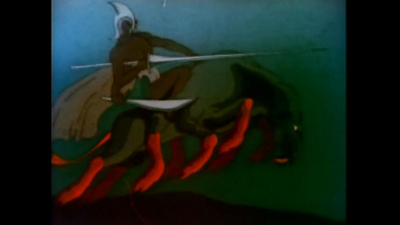
Just over 19 minutes of Deleted Scenes, being a mixture of everything from raw footage, pre-viz images, storyboards, rough visual effects and final rendering with optional comments by Stanton, don’t really reveal anything of particular note. Despite one or two amusing asides, and a bit more action, even Stanton suggests these scenes (many of them extensions of those in the movie) were removed for the right reasons and without much loss to the film, although a promise to revisit the Jeddak’s ship in a future installment is poignant in its unlikelihood due to the film’s reception. In the commentary, Morris hints at a three-hour cut, so perhaps some more intriguing scenes have been held back from this release, although again I doubt we’ll ever see them as originally intentioned. However, in what is presented here, it’s always interesting to pick up on the evolution of any film and see ideas that fell by the wayside or were re-envisioned into other moments.
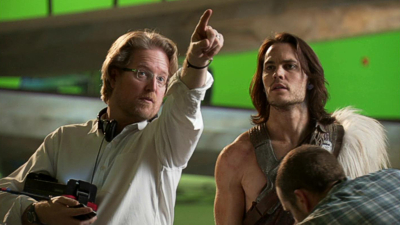
The best and easily the most substantial of the video extras is the all-encompassing 360 Degrees Of John Carter, which invites us onto the set for an average day of shooting to demonstrate just what goes into making a movie on this kind of scale and squeezing a 5am to 7pm working day into just under 35 minutes. As well as a riveting look at everything that goes on at once on a big movie set, there’s Stanton’s interesting take on animation vs live-action filmmaking, and the usual cast of down to earth behind the scenes craftspeople offer up some real characters, including costume designer Mayes Rubeo – who could probably out-mode Edna Mode from The Incredibles. What was really nice about this documentary was that rather than just spending time with the secondary extras cast, it really sticks with the principal crew: director Stanton and his leading players (even if Kitsch wasn’t filming that day), and a fun personal treat was seeing my old friend Mark Mottram stunt doubling for John Carter in the final shot of the day.
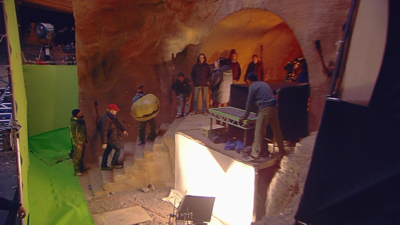
Rounding up the included supplements is Barsoom Bloopers, which is just what you would expect from that title: a near two-minute collection of some on-set hijinks, most of which were unplanned. There isn’t anything spectacularly hilarious to be found here, and this is less a gag reel than a quick-cut montage, but it does look like cast and crew had fun during production. The bundled-in standard definition DVD contains just two of these extras: the filmmakers’ commentary and the 100 Years In The Making featurette, alongside the main feature, of course, which looks overly soft and with wandering color stability after watching the pure clarity of the hi-def Blu-ray images.
Case Study:
In keeping with the, frankly, crap method Disney insists on trying (or not) to sell John Carter to audiences, the cover art across the film’s DVD, Blu-ray and Blu-ray 3D packs is as insipid as the theatrical campaign. To add insult to injury, the two Blu-ray editions (with or without 3D) simply flop the main cover image – a bad melding of a theatrical poster and a publicity shot of Kitsch – so that each cover is a mirror image of the other. On top of this, the otherwise quite engrossing main title font as seen in the actual movie, is substituted for what looks to be a most basic, boring and bland Arial Bold treatment…it really is pathetically poor and will do nothing to bolster those hopes that a strong home video showing might at least raise hopes of another movie. Showing their lack of optimism in the title, only the Blu-ray 3D has artwork on the cover (even if it is the same Photoshopped crime) while the Blu-ray Disc (blue), DVD (gray) and included Digital Copy (standard definition movie only) have one-tone coloring. Inside, a booklet offers up the Movie Rewards code and a token sweepstakes, but it’s clear Disney didn’t think it worth promoting some more anticipated upcoming releases in the package.
Ink And Paint:
Given my often underwhelming experience with theatrical 3D I waited to see John Carter in the traditional “flat” format, which is something else that must have an impact on a film’s opening weekend, when audiences don’t want to see a film in 3D must then wait until it becomes offered as such, usually a week or two into a movie’s run. Well, given the flat, artificially layered images on show on this Blu-ray 3D presentation, I’m glad I saved my dimensional dollars, as it were, since I don’t think I’ve seen a three-dimensional image as lifeless and, well, ultimately flat as John Carter’s. I was amazed when I noticed the film had seemingly been post-converted into the format and wasn’t shot this way from the outset, something that I would have expected from the Pixar-raised Stanton.
I’d heard horror stories from disappointed friends who had seen the likes of Clash Of The Titans and Burton’s Alice In Wonderland in theaters (my general aversion to 3D means I’ve not seen very many films in the format, although obviously it’s not always an option and while I have found some animated CG features to gain some “roundness”, I simply flat-out refuse to pay extra for post-converted films), and could now see what they meant. John Carter’s extra dimension is essentially non-existent, the effect being as if the several layers of depth in any given frame has been sliced up and placed on an old-style Multiplane Camera: the space between these layers is sometimes so vast it’s like you can almost see the “glass” between them.

Likewise, the false perspective in the image is exactly that, and in some scenes I even found myself questioning the positions of some of the characters. In one or two shots, it appeared to me that a character speaking in the foreground actually looked like they were further away in the frame than the character they were in front of and speaking to, a bizarre effect that can really play mind games with your brain! Even the majority of grand CG shots don’t have the true depth to them that the best (Pixar) animated films have, surprising when I would have assumed those elements must have been rendered natively in the format…?
Take away the 3D, as on the included “flat” Blu-ray Disc, and the world of John Carter opens itself up immeasurably, with gorgeously detailed images that pop and have a true depth to them that the 3D can only have been striving too much to enhance and, thus, come crashing in on itself in order to attempt to achieve. Meshing those layers together (or, rather, not separating them in the first place!) gives the film a more cohesive look between its live-action, motion-captured and computer animated elements that is much more fantastical. Visually, the film is visually sumptuous, but the 3D actually does deaden the effect. Remove that optical barrier, and John Carter becomes very high-standard demo material for any good home theater set-up.
Scratch Tracks:
Pixar’s Michael Giacchino was, perhaps, the obvious choice for Stanton, until you realise that the composer has never collaborated with the director before (Stanton’s two previous features were scored by Thomas Newman). Maybe Newman, noted for his wonderfully melodic but not always terribly action-orientated music, wasn’t the right choice here, or maybe Giacchino was a Studio-enforced safe bet (as well as his prolific Pixar gigs, the composer has also worked on a healthy number of Disney projects), but it matters little: he remains one of the best film scorers of current times and one of the few to continue the true traditions of composers such as Hermann, Korngold, Goldsmith and Williams.
Here, he evokes the kind of music one would have expected from Newman, alongside bombastic action cues and a real sense of old-fashioned adventure movie scoring, really helping to drive the rip-roaring, somewhat matinee style, approach in Stanton’s direction. It’s reproduced in ear-inspiring clarity, mixed in extremely well with the freshly created Foley effects and soundtrack atmospherics. Pounding out in DTS 7.1, it all melds with the visuals well, as would be expected in such a big studio production. Whatever can be leveled at John Carter (the flat 3D notwithstanding), one can’t criticize the top-drawer visual and aural aspects!
Final Cut:
Throw-out, or don’t bother to begin with, the post-converted added 3D angle to Andrew Stanton’s quasi-live-action directorial debut and most will find lots to enjoy and pass on through word of mouth about John Carter. Disney’s poor marketing of the film deserves to be played up when speaking about the tattered reputation of the movie, which should have been granted so much more care and attention when it, having simply found the right cinematic and literary educated audience, could have been the Studio’s next big franchise and led to further books in Burroughs’ saga being adapted.
That some Studio personnel’s heads rolled was the right course of action (not that they should have been there in the first place!) given the total lack of regard for what they potentially had, but for Stanton’s film it was unfortunately too late. Here’s hoping that John Carter (Of Mars) finds a proper re-evaluation on Blu-ray, where Burroughs’ originating sci-fi ideas can be appreciated not only for what they were, but for what they inspired and influenced afterwards. In many ways, Stanton’s film reclaims these concepts and, even if he can’t quite make them seem totally new again, still serves them up fresh in an engrossing, adventurous style!
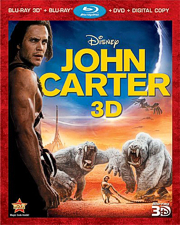 | ||
 |







